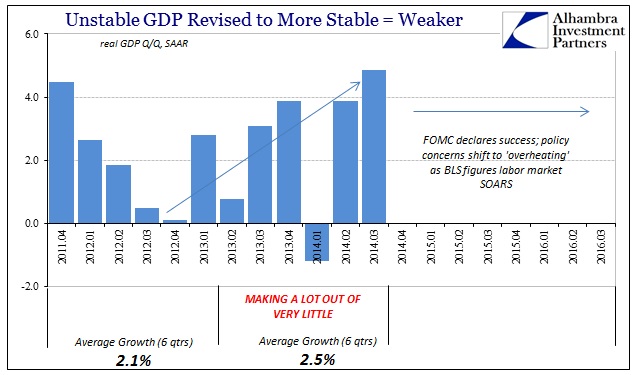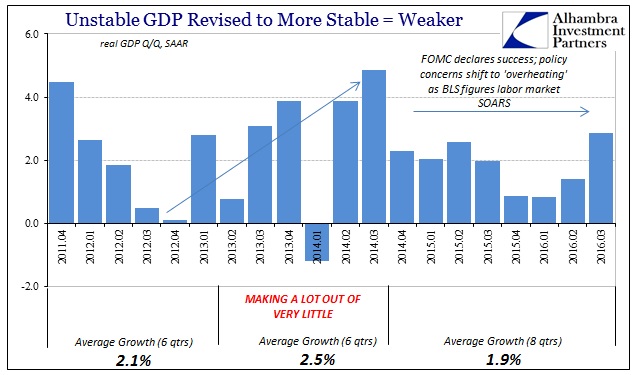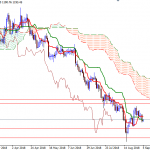The ultimate lesson for learning not to rely on one-quarter of GDP growth was actually two-quarters. In the middle of 2014, GDP posted back-to-back gains that at the time seemed nothing less than fantastic. Even with residual seasonality revisions and new benchmarks, those two-quarters remain prominent landmarks in an otherwise bleak landscape. And that is the whole point; despite the fact that the BLS currently figures Q3 2014 GDP at nearly 5%, such a strong estimate meant absolutely nothing as far as telling us anything meaningful about the actual state of the economy and how it might move forward. It was pure fool’s gold.

This should not have been a surprise, but it was because so many people were tired of gloom and economists so desperate for tangible “proof” they weren’t all frauds that they all saw what they wanted rather than what actually was. Underneath it all, there was, as I described yesterday, only great trouble and stubborn weakness. What looked good to a lot of people who should have known better was in reality just a momentary, isolated period of less bad.

Those are the only two speeds of this economy in this depression – bad and less bad. If 5% was less bad, then what is 2.86%? As you can plainly see above, the estimate for Q3 2016 was the highest since that last less bad quarter in 2014; but at only just more than half the growth rate. Predictably, the current headline is being celebrated as significant for all the same reasons that one was.
A bigger than expected 2.9 percent annual growth rate in the third quarter was cheered by analysts and investors as a sign that a moribund economy is finally picking up speed. The report, the last read on the U.S. economy’s pace of growth before the election, was also seen as giving Democrats a solid talking point about the Obama administration’s economic policies.
It is the day’s message in what counts for economic news and analysis, as the idea will be pushed over and over that “a moribund economy is finally picking up speed” even though this same “interpretation” has been issued and disproved time after time over the years. The reason is quite simple: one-quarter does not erase all those of lesser “speed” that came before it. In fact, it is those quarters that make all the difference. Even the same CNBC article is less unrestrained in its giddy acceptance of Q3’s headline:














Leave A Comment